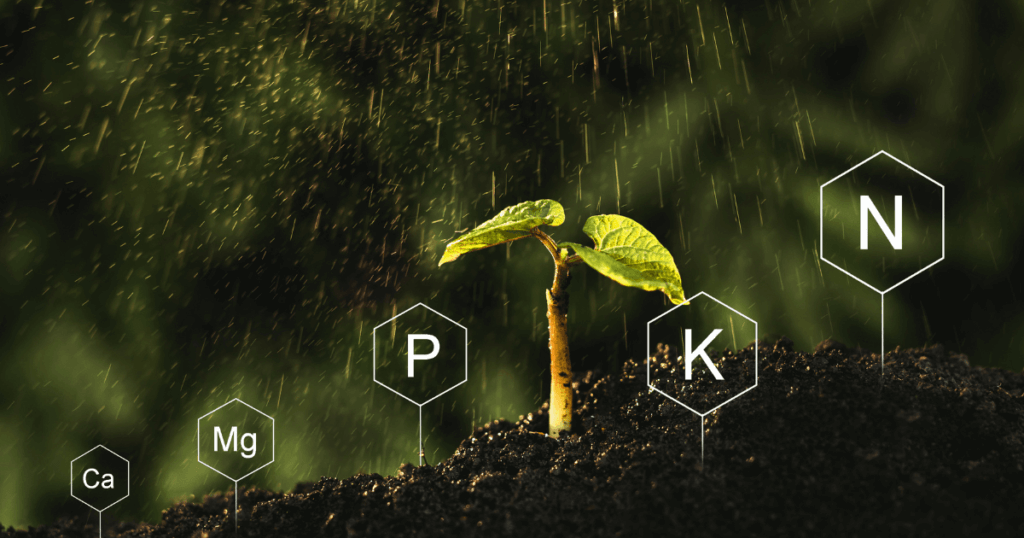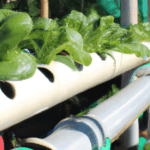Nurturing Plants: Indoor Farming Nutrient Management

Growing plants indoors has gained immense popularity in recent years due to its numerous benefits. However, successful indoor farming requires careful nutrient management to ensure optimal plant growth and productivity. In this article, we will explore the significance of nutrient management in indoor farming and provide valuable insights into how you can nurture your plants effectively. From understanding the role of nutrients to implementing proper feeding schedules, we will cover everything you need to know to create a thriving indoor garden.
Table of Contents
The Importance of Nutrient Management
Ensuring Plant Health and Growth
Proper nutrient management is crucial for the health and growth of indoor plants. Nitrogen, phosphorus, and potassium are essential in various physiological processes, including photosynthesisThe process by which plants convert light energy into chemic... More, root development, and flower formation. Maintaining a well-balanced nutrient supply provides plants with the necessary elements for optimal growth, resulting in healthy foliage, strong stems, vibrant flowers, and bountiful yields.
Preventing Nutrient Deficiencies and Toxicity
Adequate nutrient management helps prevent nutrient deficiencies and toxicity, which can harm plant health. Nutrient deficiencies can lead to stunted growth, yellowing leaves, and reduced fruit production. On the other hand, nutrient toxicity can cause nutrient imbalances, leaf burn, and even plant death. By closely monitoring nutrient levels and adjusting accordingly, you can ensure that your plants receive the right amount of nutrients without overwhelming them.
Understanding Plant Nutrient Requirements
Before delving into nutrient management techniques, it’s essential to have a basic understanding of the primary nutrients plants require and their roles:
1. Nitrogen (N)
Nitrogen is crucial for plant growth and chlorophyll production. It aids in the formation of amino acids, proteins, and enzymes. Nitrogen deficiency often results in yellowing leaves and stunted growth.
2. Phosphorus (P)
Phosphorus is vital for energy transfer and root development. It promotes strong root systems and enhances flowering and fruiting. Plants deficient in phosphorus may exhibit purplish leaves and reduced overall growth.
3. Potassium (K)
Potassium regulates various physiological processes, including water uptake, nutrient transport, and enzyme activation. It strengthens plants, improves disease resistance, and enhances fruit quality. Symptoms of potassium deficiency include weak stems, leaf scorching, and reduced yieldThe amount of crop or harvest produced from a given area or ... More.
4. Secondary and Micronutrients
Secondary nutrients, such as calcium (Ca), magnesium (Mg), and sulphur (S), along with essential micronutrientsEssential nutrients required by plants in trace amounts. The... More like iron (Fe), manganese (Mn), zinc (Zn), copper (Cu), boron (B), and molybdenum (Mo), are also crucial for plant growth. While they are required in smaller quantities, their deficiency can significantly impact plant health and productivity.
Implementing Effective Nutrient Management Strategies
1. Conducting Soil and Water Analysis

Before starting your indoor garden, assessing the quality of your soil and water is essential. Soil analysis helps identify nutrient deficiencies and pHA measurement scale ranging from 0 to 14 indicates the acidi... More levels, enabling you to tailor your nutrient management approach accordingly. Similarly, water analysis allows you to understand the mineral composition of your water source and make necessary adjustments for optimal plant nutrition.
2. Choosing the Right Growing Medium
Selecting the appropriate growing medium is crucial for nutrient management in indoor farming. Different plants have varying preferences, so consider factors like water retention, aerationThe process of providing air circulation or oxygenation to t... More, and nutrient-holding capacity when choosing your medium. Common growing mediums include soil-based mixes, coco coir, perlite, vermiculite, and hydroponic systems.
3. Planning a Feeding Schedule
Establishing a feeding schedule is vital to ensure a consistent nutrient supply for your indoor plants. Consider the specific needs of each plant species, as different plants have varying nutrient requirements at different growth stages. Begin with a balanced fertilizer during the vegetative stage and transition to a bloom-specific formula during the flowering stage. Regularly monitor your plants’ progress and adjust the feeding schedule and nutrient concentrations accordingly.
4. Monitoring and Adjusting Nutrient Levels
Monitoring nutrient levels is crucial to prevent imbalances and ensure optimal plant health. Conduct periodic soil and tissue tests to assess nutrient availability and identify deficiencies or excesses. Adjust your nutrient solutions or fertilizers to maintain a proper nutrient balance based on the test results. Remember to follow the recommended dosage guidelines to avoid over or underfeeding your plants.
5. Considering Supplemental Nutrients
In addition to the primary nutrients, plants may benefit from supplemental nutrients to support their specific growth requirements. For instance, calcium and magnesium supplements can help prevent nutrient deficiencies and improve overall plant health. Consider using organic supplements like seaweed extracts, fish emulsion, or compostDecomposed organic matter, such as plant material or food sc... More tea to provide additional micronutrientsEssential nutrients required by plants in trace amounts. The... More and promote biological activity in the growing medium.
6. pH Monitoring and Adjustment
pHA measurement scale ranging from 0 to 14 indicates the acidi... More plays a critical role in nutrient availability to plants. Most indoor plants thrive in a slightly acidic to neutral pHA measurement scale ranging from 0 to 14 indicates the acidi... More range (5.5-6.5). Regularly monitor the pHA measurement scale ranging from 0 to 14 indicates the acidi... More of your nutrient solutionA balanced mixture of essential nutrients dissolved in water... More or growing medium and make necessary adjustments using pH-up or pH-down solutions. Maintaining the proper pHA measurement scale ranging from 0 to 14 indicates the acidi... More range ensures optimal nutrient uptake and minimizes the risk of nutrient deficiencies or toxicities.
7. Proper Watering Techniques
Watering is an integral part of nutrient management. Overwatering can lead to nutrient leaching and oxygen deprivation, while underwatering can cause nutrient accumulation and drought stress. Water your plants thoroughly, allowing excess water to drain out, and avoid letting the roots sit in standing water. Implement a regular watering scheduleA predetermined plan for watering plants in indoor farming. ... More based on your plants’ needs and adjust as necessary, considering factors like temperature, humidity, and growth stage.
8. Incorporating Organic Matter
Adding organic matterDecomposed plant or animal materials that are rich in organi... More to your growing medium can significantly improve nutrient management. Organic matterDecomposed plant or animal materials that are rich in organi... More enhances soil structure, water-holding capacity, and nutrient retention. Incorporate compostDecomposed organic matter, such as plant material or food sc... More, aged manure, or organic amendments into your soil or growing medium to provide slow-release nutrients and promote microbial activity. This helps create a healthy and fertile environment for your plants to thrive.
Conclusion
Nutrient management is a critical aspect of indoor farming that directly impacts your plants’ health, growth, and productivity. By understanding the essential nutrients, implementing effective strategies, and closely monitoring your plants’ needs, you can create an optimal nutrient environment for indoor gardening success. Remember to conduct soil and water analysis, choose the right growing medium, plan a feeding schedule, monitor and adjust nutrient levels, consider supplemental nutrients, monitor pHA measurement scale ranging from 0 to 14 indicates the acidi... More levels, practice proper watering techniques, and incorporate organic matterDecomposed plant or animal materials that are rich in organi... More. With diligent nutrient management, you can nurture your indoor plants and enjoy a flourishing indoor garden.
Nutrient Management – FAQs
 A soilless cultivation method where plants are grown in nutr... More or aeroponic systems, require a constant supply of nutrient solutions. The medium’s pHA measurement scale ranging from 0 to 14 indicates the acidi... More and EC levels can also influence the availability of nutrients to the plants.
A soilless cultivation method where plants are grown in nutr... More or aeroponic systems, require a constant supply of nutrient solutions. The medium’s pHA measurement scale ranging from 0 to 14 indicates the acidi... More and EC levels can also influence the availability of nutrients to the plants.Other Useful sites related to Nutrient Management
- https://extension.psu.edu/hydroponics-systems-and-principles-of-plant-nutrition-essential-nutrients-function-deficiency-and-excess
- https://www.intechopen.com/chapters/80089
- https://www.frontiersin.org/articles/10.3389/fpls.2022.845472/full